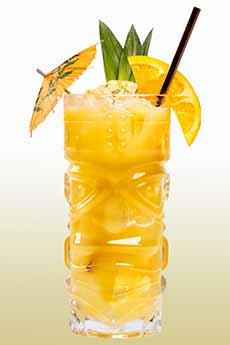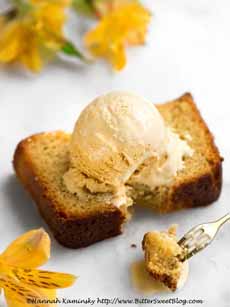Recipes With Pineapple Juice For National Pineapple Juice Day
|
|
August 14th is National Pineapple Juice Day. While we don’t think we’ve had a glass of pineapple juice in our adult life, we have had it in cocktails, desserts, glazes, marinades, and other recipes. Here are some of them. We’ve also included a few that include pineapple chunks or slices but no added juice. > The history of pineapple juice is below. Pineapple juice is rich in nutrients, particularly copper, manganese, and vitamins B6 and C. These nutrients play an important role in bone health, immunity, wound healing, energy production, and tissue synthesis. Some research suggests that pineapple juice may contribute to a stronger immune system. In 1932, the Hawaiian Pineapple Company successfully developed a process of clarifying the juice, while capturing the aroma and flavor of the fruit. Countries consuming the most pineapple juice: Pineapple juice powder can be used in baked goods (cakes, muffins, pies, scones), candies, condiments (barbecue and chili sauces, chutneys, jams), and savory recipes like sauces and stews. Pineapple juice powder can also be used in marinades for chicken and fish. The pineapple Ananas comosus var. comosus) originated in South America, thousands of years ago. It is believed to have originated in what is now southern Brazil and Paraguay. The natives of those regions carried it throughout South America via trade. It eventually reached the Caribbean, Central America, and Mexico, where it was cultivated by the Mayas and the Aztecs. The first Europeans to see pineapples were Christopher Columbus and his crew, on the Caribbean island of Guadeloupe, in 1493. Columbus called them piña de Indes, “pine of the Indians,” because their shape was reminiscent of Europe’s pine cones. He brought them back to King Ferdinand in Spain, and the exotic fruit was an instant hit in the royal court. |
|
|
The Portuguese, who colonized Brazil, had brought the fruit from Brazil to India by 1550. It was brought to northern Europe by the Dutch, from their colony in Surinam. Spanish traders introduced the pineapple to Guam, Hawaii, The Philippines, and Zimbabwe. There is no record of the date when pineapples arrived in Hawaii. The fruit may have arrived with the Spanish years before the arrival of Captain James Cook in 1778. Conceivably, it could have washed ashore from a Spanish or Portuguese shipwreck or brought ashore by sailors [source]. However, the presence of pineapples was first recorded in 1813. A Spanish horticulturist, Don Francisco de Paula Marin, described pineapple planting in his journals in 1813. When American missionaries first arrived in Hawaii in 1820, pineapples were found growing wild and in small gardens. The pineapple canning industry began in Baltimore in the mid-1860s using fruit imported from the Caribbean. The export-based Hawaiian pineapple industry was developed by a group of Californians who arrived in Hawaii in 1898, and the well-connected James D. Dole who arrived in 1899. The first profitable lot of canned pineapples was produced by Dole’s Hawaiian Pineapple Company in 1903 and the industry grew rapidly from there [source]. Pineapple juice is manufactured from ripe pineapples. It contributed to the success of Hawaii’s pineapple industry in the 1930s. In 1932, the Hawaiian Pineapple Company successfully developed a process of clarifying the juice, while capturing the aroma and flavor of the fruit. This led to the large-scale cultivation of pineapples and the canning of both the juice and the fruit (slices, chunks, crushed). This enabled many Americans, Europeans, and consumers in other parts of the world to experience pineapple for the first time. Fresh pineapples were very costly, due to the need to pick them when ripe. and then transport them across the seas. Most of America’s pineapple juice consumption goes into cocktails. Otherwise, the average American drinks pineapple juice 1.4 times per year [source]. The global pineapple juice market size was valued at $2.37 billion in 2021 and is expected to expand at a compound annual growth rate (CAGR) of 8.1% from 2022 to 2028 [source].
|
||




